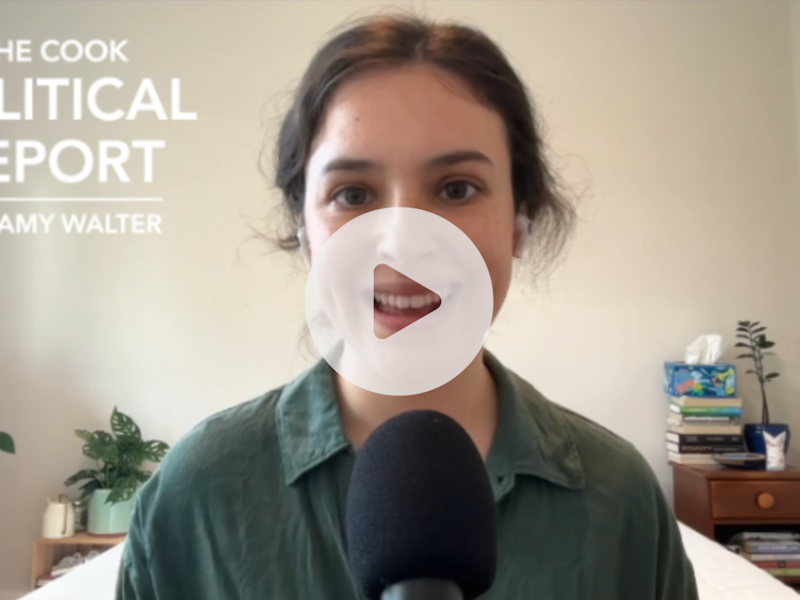
Not a day goes by when I don’t get asked who I think the Democratic nominee will be in 2020. My answer of "I don’t have any idea," is not always satisfying. But, it’s the only honest answer. There are simply too many unpredictable factors involved in the nomination process this time around to feel confident about any predictions this far out from the nomination. Here are five of those unpredictable factors:
- A Huge Field: Our current potential candidate list has over 30 serious potential candidates. Some have almost universal name recognition — Vice President Biden — while others would barely crack the name ID threshold (Washington GovernorJay Inslee). To be sure, this list will wither down even before we hit the New Year. Already, big names like New York Gov. Andrew Cuomo and former Massachusetts Gov. Deval Patrick have taken their names out of contention. But, in an era where the party has little influence in shaping the field, and where access to serious amounts of money has become more ‘democratized’, the traditional reasons for candidate culling are gone . But, for all the change and churn we’ve seen in the nomination process over the last few years, the most important factor remains the same: the candidate that ‘fits’ the moment is the candidate who is best positioned to win. And, sometimes the ‘moment’ isn’t all that obvious until much later in the process. The best prepared, best-funded and best-known candidate can fall short simply because their profile or their message or background is out of step with the current zeitgeist in the party. Meanwhile, less prepared, lesser-known or less-polished candidates who capture the mood of the electorate at the right time can win.
- Money: In the "old days" it was all about access to a rolodex and cash from party loyalists. But, Howard Dean’s 2004 campaign disrupted that model with the new-fangled internet fundraising. SuperPACs and their billionaire backers played critical roles in the last two presidential contests. In 2018, Beto and a bunch of House Democrats proved that even non-household name candidates could raise millions and millions online. So, what will the new innovation for 2020 look like?
We already know some of the pitfalls for potential candidates. Democrats have spent the last two cycles denouncing corporate money, which means greater scrutiny over campaign money from traditional deep-pocketed donors. As the New York Times’ Shane Goldmacher writes: "The risk for any 2020 Democrat is that reliance on a billionaire-backed super PAC becomes a litmus test of liberal credibility as a reformer." - The Calendar: A bunch of changes to the calendar and the voting rules for 2020 will also have unpredictable consequences. The role of super-delegates has been diminished. Six states that held caucuses in 2016 have switched to primaries in 2020 — Colorado, Idaho, Maine, Minnesota, Nebraska and Utah. Early voting in California will begin before voters even show up to caucus in Iowa.
In 2008, the Obama campaign focused on the oft-overlooked caucus states to quietly build up a delegate lead while the Clinton campaign and the media obsessed over the traditional primary and high-profile contests. Which campaign in 2020 will be able to exploit undiscovered (or uncovered) paths to the nomination? - The Debates: There’s no way to cram all 15-20 candidates on stage, so how the networks determine which 5-6 candidates are invited to their debate/forum/townhall? By polling position? Randomly? By height? By age? (Tonight, on MSNBC, the battle between Gen X and the Baby Boomers!!). Maybe they can use the old-school Hollywood Squares set to pack more candidates into one easy camera shot?
Also, who’s to say that the old-line TV folks get all the action? Why not an ActBlue/DailyKos sponsored forum that is streamed online? The Pod Save America dudes HBO platform will also be a tempting venue.
This also means more pressure on campaigns to pick and choose wisely. While a viral moment from one of these events may vault a third-tier candidate to instant stardom, it’s just as likely that these time-sucking affairs keep candidates from doing the all-important (but less glamorous) spadework of fundraising and campaigning. Oh, and most of them have day jobs to focus on too. - The Trump Factor: Normally, a sitting president running for re-election does not get publicly engaged in the primary process for the other side. While his opponents claw and scratch each other, he flies above it all. And, gets to look, well, presidential. There he is signing stuff in the Rose Garden. Flying Air Force One to talk with foreign leaders. Let the other guys look petty and small. I. Am. The. President.
Of course, that’s not what Trump will do. We should expect him to be deeply engaged in every minute of the 2020 process. He’ll be dishing out nicknames and late-night twitter insults. I’ve already imaged this exchange in a future CNN Democratic debate:
** CHRYON RUNNING AT THE BOTTOM OF THE SCREEN WITH TRUMP TWEETS IN LIVE-TIME
Wolf Blitzer: Sen. Harris, the president has just tweeted “Kooky Kamala has no idea what she's talking about. She wants open borders and loves MS-13” Would you like to respond?
How well (or poorly) candidates react to — and respond to — Trump’s live-time engagement will have a significant impact on the perceptions of these candidates among Democratic primary voters.
This is just an introduction. Throughout the next year, we will be digging into each more deeply. And, given how unpredictable the last two years have been, we should expect to add a couple more factors that we’ve yet to imagine to this list.









Subscribe Today
Our subscribers have first access to individual race pages for each House, Senate and Governors race, which will include race ratings (each race is rated on a seven-point scale) and a narrative analysis pertaining to that race.